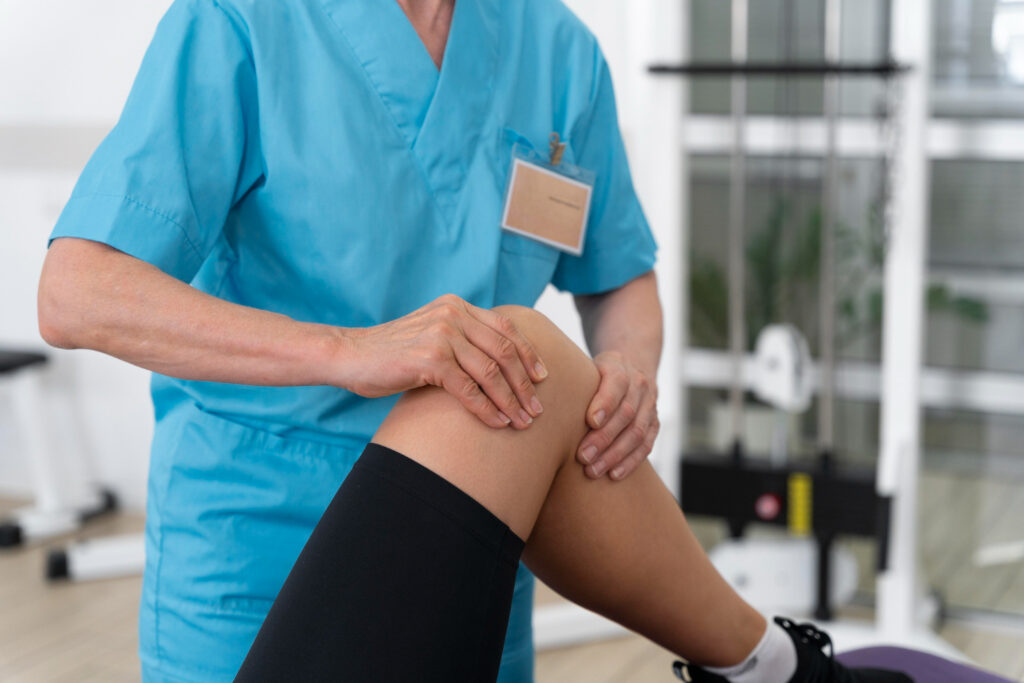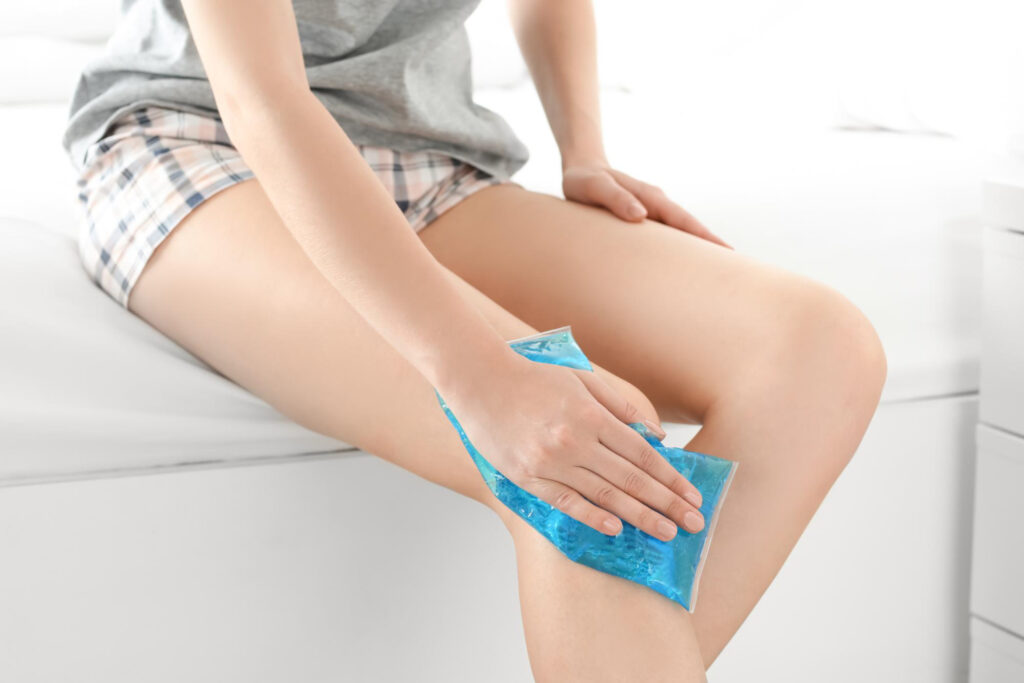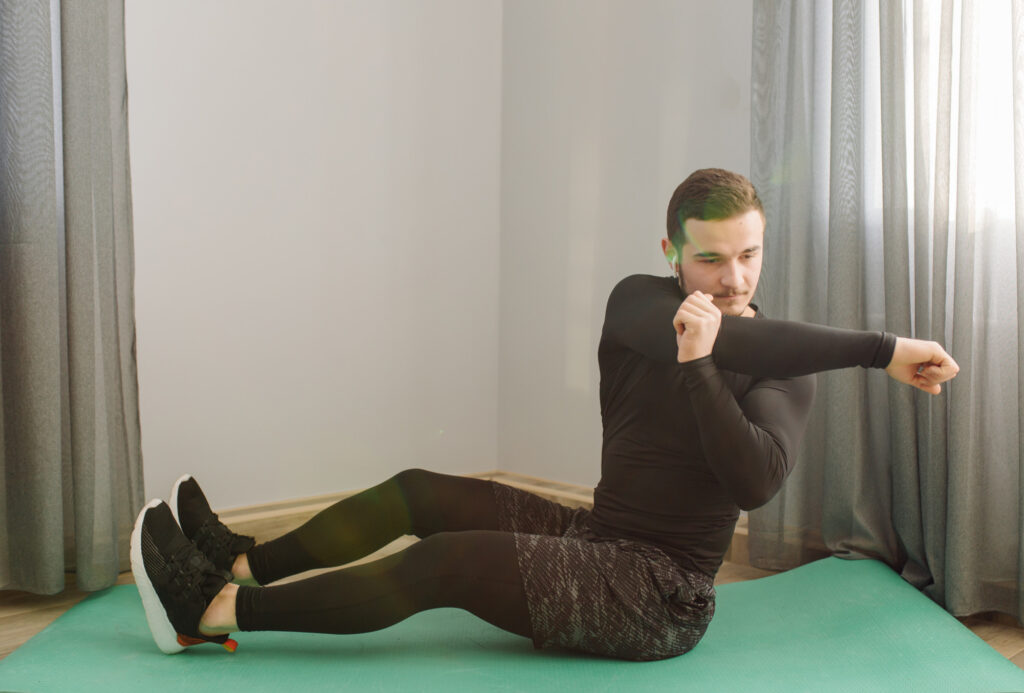Ankle and knee injuries rank among the most frequent musculoskeletal injuries we encounter, particularly in athletes, physically active people, and those who participate in recreational sports. Whether you suffered a knee sprain while playing soccer or twisted your ankle while running, how you treat the injury at the time of trauma can have a big impact on your recuperation and help you avoid long-term issues. I, Dr Yogesh Sisodia, an orthopaedic surgeon specialized in Sports Orthopaedics and Robotic joint replacement surgery, can attest that knowing how critical early injury management is may have a profound impact.
We’ll go over some crucial advice on how to treat knee and ankle injuries in the crucial moments right after they occur in this article. Early intervention done right will improve your entire recovery process, minimize pain, and reduce edema.
Step 1: Acknowledging the Damage
Knowing when you’ve been injured is crucial before we discuss treatment options. The following are some indicators of an ankle or knee injury:
Pain: Depending on the severity of the injury, this might range from little discomfort to excruciating pain.
Swelling: Frequently observed in both ankle and knee injuries, swelling is a common indicator of tissue inflammation and bleeding.
Bruising: Skin discolouration, which can happen with sprains or strains, is an indication of internal bleeding.
Limited mobility: The joint is difficult to move.
Step 2: Your First Line of Defense: The R.I.C.E. Method
The R.I.C.E. method—which stands for Rest, Ice, Compression, and Elevation—should be used as soon as possible after suffering an ankle or knee injury. The foundation of early injury care for both knee and ankle problems is this strategy.
Rest
In order to keep the damaged area from getting worse, rest is essential. After an injury, putting more weight on the joint could make it worse, particularly if you have a sprain, strain, or ligament tear. Avoid applying pressure to the injured knee or ankle, and if required, use a brace or crutches.

Ice
The damaged area can be made less swollen and less painful by applying ice (wrapped in a cloth or towel). For the first 48 hours following the accident, ice should be given for 20 to 30 minutes every two to three hours. This will lessen inflammation, which is essential to lowering the possibility of more tissue damage.
Compression
To help reduce swelling and give stability to the damaged area, a compression bandage, like an elastic wrap (ACE bandage, for example), can be applied. But be careful—tightening the bandage too much can impede blood flow and cause more harm than good.
Elevation
By promoting fluid evacuation, elevating the damaged ankle or knee above the level of your heart helps to minimize swelling.
Step 3: Pain Management Over-the-Counter
An important aspect of the healing process is pain control. Over-the-counter (OTC) anti-inflammatory drugs can be useful for mild to moderate discomfort. These drugs lessen swelling as well as pain. Follow the dose instructions carefully, though, and get medical help if your pain worsens or doesn’t go away after taking over-the-counter medications.
Note: Because NSAIDs (nonsteroidal anti-inflammatory medicines) might cause kidney and gastrointestinal problems, do not take them for long periods without first talking to a healthcare provider.
Step 4: Knowing When to Get Medical Help
Although many mild to moderate injuries can be treated with conservative care and the R.I.C.E. technique, there are situations in which a professional evaluation is necessary. You ought to get medical attention if:

You have a lot of trouble putting weight on the injured limb or manipulating the joint.
After a few days of rest and ice, the swelling does not go down.
At the scene of the injury, you observe significant bruising, deformity, or a “popping” sound.
Over time, the discomfort either gets worse or stays the same.
You have a history of previous knee or ankle injuries, or if you suspect a more serious injury like a ligament tear or fracture.
Your orthopaedic surgeon will assess the injury through a physical exam and may recommend imaging studies like
Step 5: Prompt Rehabilitation and Mobilization
Early mobilization is also necessary to ensure long-term recovery, even though resting the damaged joint is critical in the early phases. It’s crucial to start mild range-of-motion activities after a few days of rest and after the severe pain and swelling have decreased.
To maintain flexibility, the ankle may benefit from ankle circles, mild stretches, or up-and-down motions.
Exercises such as mild knee bending and straightening can assist preserve the knee’s range of motion and flexibility. As your body permits, you should increase these gradually while maintaining a pain-free range.
Depending on the extent of the injury, a physical therapist can advise you on the appropriate exercises and course of treatment.
Step 6: Guarding Against More Injuries
After your knee or ankle injury has healed, it’s critical to take precautions against getting hurt again. These can include:
Strengthening exercises: Focus on strengthening the muscles around the knee and ankle to provide more support and stability. This can reduce the risk of further sprains or strains.
Stretching: Flexibility is key to preventing muscle tightness and joint instability. Incorporating regular stretching routines can keep muscles and tendons flexible.
Proper footwear: Make sure to wear shoes that provide adequate support, cushioning, and stability, especially during physical activities.
Sports-specific training: If you’re an athlete, sports-specific drills and techniques can help you avoid overloading the joints or making sudden, risky movements.
Injury prevention programs: A specially designed Sports specific workout program and injury prevention drills can drastically reduce the incidence of sports injuries eg. Pune sports injury prevention program(PSIPP) https://dryogeshsisodia.com/pune-sports-injury-prevention-program/
In conclusion
Ankle and knee injuries must be treated quickly to promote a full recovery. By acting quickly, utilizing the R.I.C.E. method, managing pain, and seeking professional help when necessary, you can optimize your recovery and return to your active lifestyle sooner. Remember, if the injury is severe or doesn’t improve with conservative measures, don’t hesitate to consult with a healthcare professional to ensure you get the proper treatment.
Stay active, stay healthy, and take care of your joints—your future self will thank you!